Discover A New Kyoto! 5 Things To Do At Kyoto By The Sea

Have you already seen the temples Kyoto? Go find a new side of Japan's ancient capital at Kyoto by the Sea! This coastal area offers everything from Amanohashidate to the traditional fishing village of Ine. This article lists five things you have to try.
What is Kyoto by the Sea?
What comes to mind when you think of Kyoto? Do you imagine famous temples like Kiyomizudera and Kinkaku-ji Temple? Have you heard of Fushimi Inari Shrine and Arashiyama?
The appeal of Kyoto doesn't end with these popular spots, though. “Kyoto by the Sea,” a region in northern Kyoto prefecture facing the ocean, has been gathering popularity in recent years.
There are many things to experience exclusive to this area, including Amanohashidate, one of Japan’s famous locations with beautiful views, Ine, a village lined with houses of fishermen bordering the sea. You can also participate in farm stays and try washi paper making. Come to discover the charms of a new, unique side of Kyoto.
1. Let Amanohashidate Take Your Breath Away

The first spot is Amanohashidate, famous for its scenic views.
The stretch of lands resembles a bridge along the sea This road was given the name “Amanohashidate,” which describes its appearance in Japanese.
Amanohashidate was chosen as one of Japan’s Three Scenic Views (three views considered to be the most beautiful in Japan) alongside Miyajima, Hiroshima and Matsushima in Sendai.

Amanohashidate has observatories on both of its shores. The picture above is of Kasamatsu Park, an observatory park located on its north shore.
When you’re at the observatory, take a look at Amanohashidate between your legs, as shown above. It’ll look as if a bridge is stretching all the way up to the sky!

A lift will take you up to Kasamatsu Park. Near the lift platform at the bottom are many souvenir shops.

You will find oiled sardines and black soybean sweets, which are some staple souvenirs of the region. Fish are also roasted here and can be enjoyed on the spot.
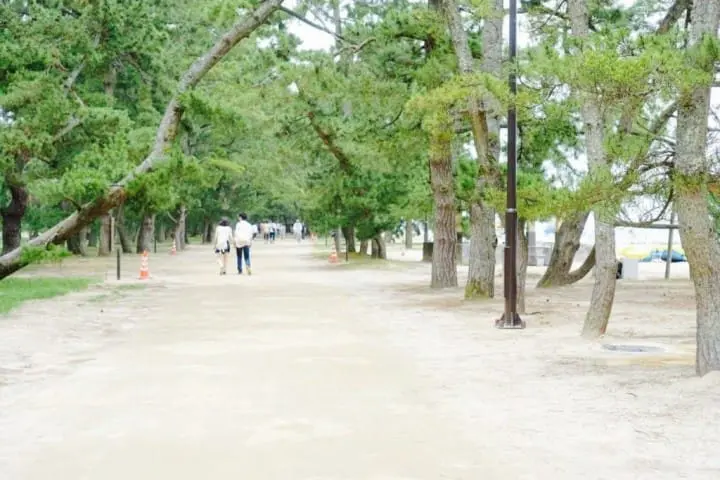
Picture from Near Kyoto! Amanohashidate – How To Enjoy One Of Japan’s Three Scenic Views
Try crossing Amanohashidate if you have extra time! A refreshing avenue of trees, made up of approximately 8,000 pine trees, stretches along the entire 3.6 kilometer- (2.2 miles) length.
If you walk at a leisurely pace, the course will take roughly about one to one and a half hours to complete. Rental bicycles (Japanese) are also available on both banks, so you can enjoy bicycling, too. It takes about 20 minutes to cross the sandbank by bicycle.
Amanohashidate
Address: Kasamatsu Park Kyoto, Miyazu, Ogaki 75 Google Map
Access: Take the JR Limited Express Hashidate (bound for Toyooka) from JR Kyoto Station. Get off at Amanohashidate Station (approximately 2 hours and 5 minutes, 4,600 yen)
Official Website: http://www.amanohashidate.jp/lang/en/
2. Encounter Traditional Fisherman Lifestyle in Ine
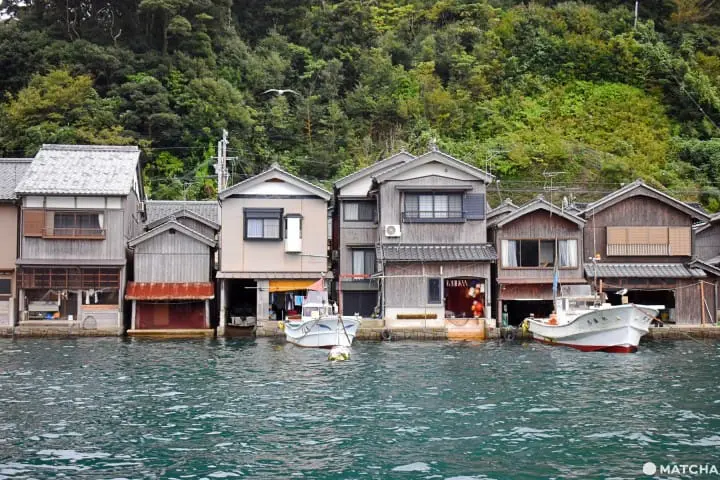
Visitors can go to Ine to discover a traditional Japanese way of living.
Here, you’ll find a village lined with boat houses (funaya) that face the sea. Fishing boats are docked at these funaya.
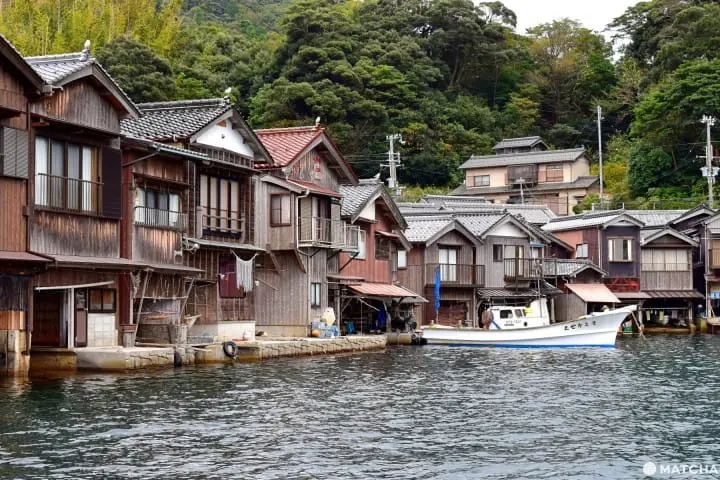
There are 230 funaya homes in Ine. Thirty of them continue to be the homes of active fishermen. Although fewer fisherman reside here than in the past , the traditional scenery and structures of the area remain preserved.
The waves are very gentle and it has been said that dolphins sometimes stray into the dock waters.

For this article, we were given the visited the home of Ms. Yamada, a resident of Ine.
As pictured, the house is built to allow a fishing boat to be docked inside the home.
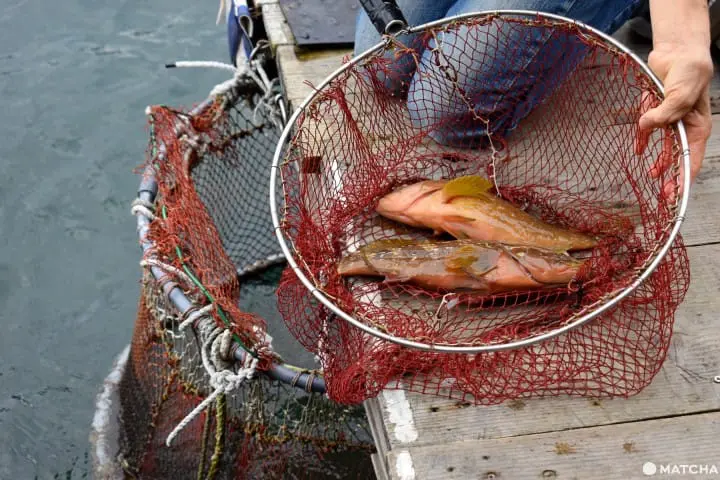
Various fish including sardines, horse mackerel, squid, and Pacific bluefin tuna can be caught in the sea right in front of the house. The captured fish are placed into a net on the side of boats, as pictured above, and are cooked for dinner.
Ms. Yamada told us, “Ine children grow up diving into the sea and eating freshly caught turban shells and abalone from an early age.” We felt very envious when we heard this!
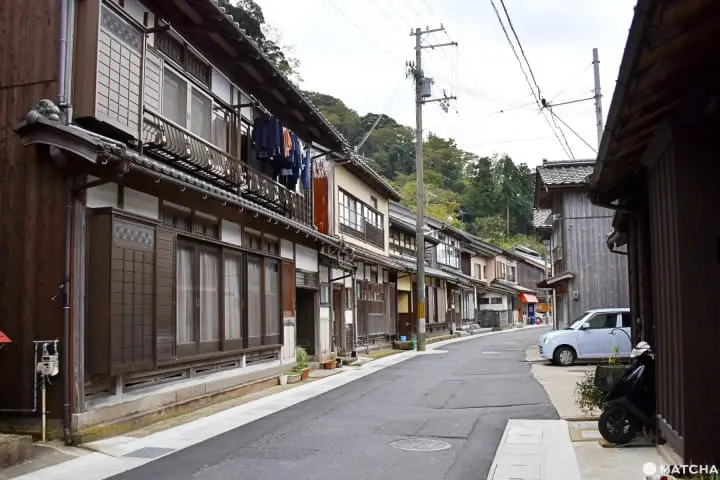
Many residents of Ine have two homes. Daily routines, like eating meals, take place in their mountain-side home (left) while their seaside home (right) acts as a boat garage and a detached home for when relatives come to visit.
You can take a walk in the village, like pictured above, for yourself, but please be mindful of making noise as there are residents in these homes.

We recommend going on the 25-minute boat ride that circles around the Ine sea. During the ride, you can view Ine’s boat houses from the sea. Seagulls follow the boat and you can feed them. They come flying very close, making it an exciting experience. The ride is 680 yen for adults and 340 yen for children. It operates every thirty minutes on the hour and half hour.
The village itself is enjoyable even on a day trip, but we suggest staying in a funaya guesthouse to fully experience the area. There are seventeen guesthouses in Ine. Some offer immersive activities, including going out to the sea, fishing, and cooking and enjoying what you've caught yourself. For details, please check the tourism association’s website.
Ine Funaya
Access: Take the Tankai Bus from JR Amanohashidate Station, then exit at the Ine bus stop (about 1 hour, 400 yen)
Official Website: http://www.ine-kankou.jp/english/
3. Enjoy a Special Meal at a Farm Stay

We also recommend a farm stay. You can try plenty of freshly harvested vegetables and ingredients while immersing yourself in the traditional Japanese lifestyle!
You’ll find fourteen guesthouses operated by farmers in an area called Ayabe. For this article, we visited Poka Poka Farm.
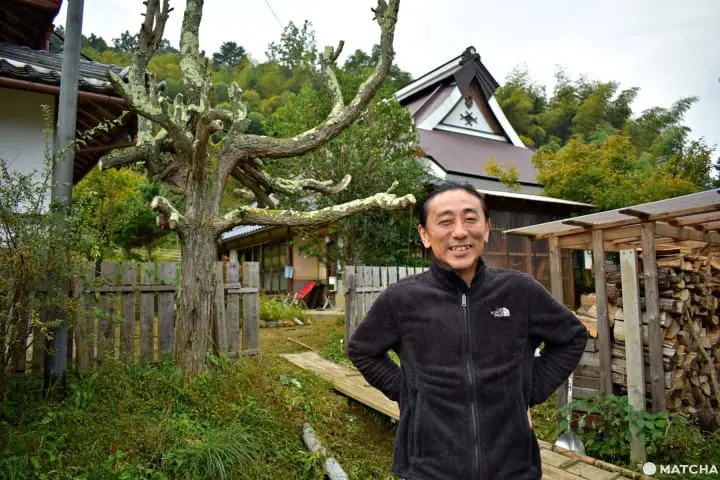
The owner, Mr. Kushida, is originally from Tokyo. However, he moved to Ayabe, determined to join the agriculture industry, and opened his guesthouse in 2017 while working as a farmer.
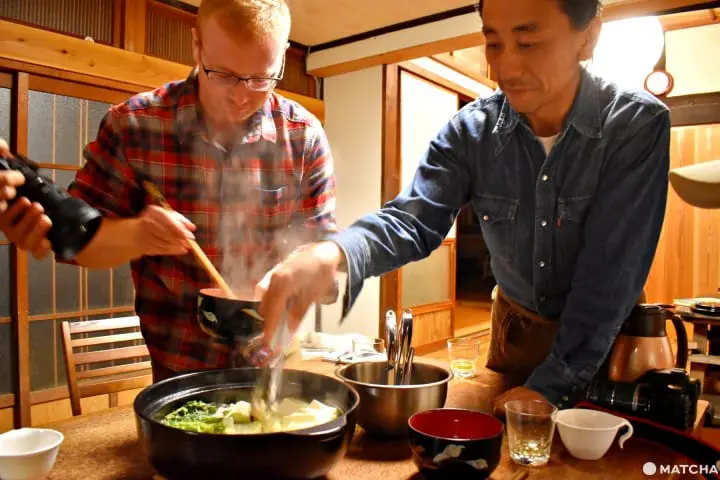
Dinner changes daily and uses local vegetables. During our visit, we had a stew made with freshly harvested vegetables, and chicken from nearby Hyogo Prefecture. The dish was flavored with only salt and kombu kelp. The simple preparation brought out the flavors of the ingredients.

The final part of the meal is zosui (rice porridge) made with the flavorful broth from the vegetables and chicken. It is garnished with sesame seeds grown by Mr. Kushida.
This dish is truly delicious! The rich fragrance and flavor of the sesame seeds taste great with each ingredient.
Mr. Kushida smiled as he told us, “Please come back as often as you’d like. Treat this place as if this were your own home.”
There are also several other farm stays in Ayabe, so you might find yourself with a growing number of places you can call home!
Poka Poka Farm
Address: Kyoto, Ayabe, Kamiyatacho, Hishiro 8 Google Map
Access: Take the Aya Bus (Nishiyata Line) from the south exit at JR Ayabe Station, then exit at Kamiyatacho-Seigo (about 20 minutes, 300 yen). After alighting, walk for 5 minutes. There are four buses per day (7:57, 12:57, 15:57, and 18:17). Pickup from Ayabe Station is also possible if you contact Poka Poka Farm beforehand.
Official Website: https://pokapokanouen.jimdo.com/ (Japanese)
List of Ayabe Farm Stays: https://www.ayabe-kankou.net/english/hotel.html
4. Make Kurotani Washi Paper
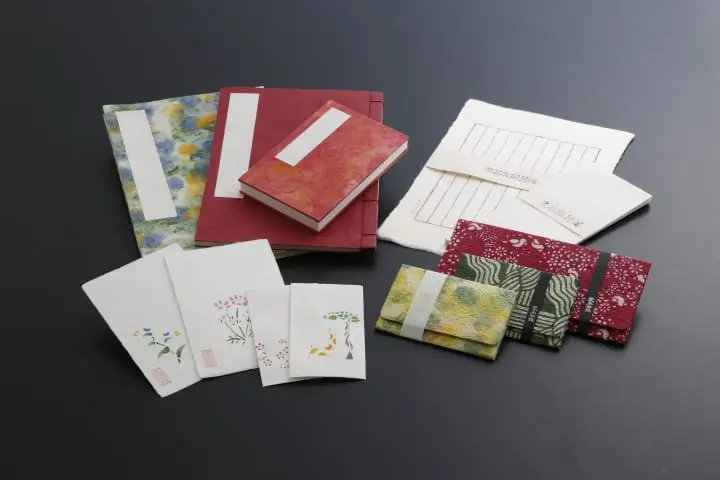
Picture courtesy of Kurotani Washi Cooperative Association
Paper is a necessary item in our daily lives. Kyoto’s Kurotani area makes Kurotani Washi, a Japanese washi paper, in a traditional method.

Kurotani is a quiet village with a small river that runs between its homes.
The village has short daylight hours due to being surrounded by mountains while it is covered in snow during the winter. This intense cold and clean river water help create very strong and high-quality Kurotani washi paper.
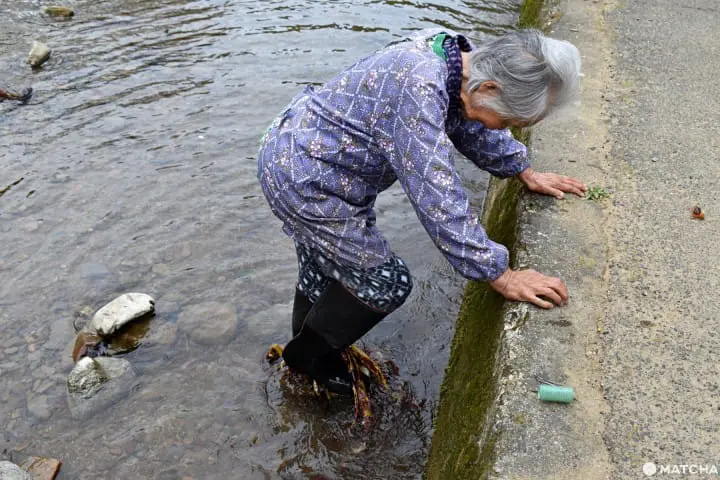
In the river, there was a woman working. The bark of a plant called paper mulberry, which will become material for the paper, is stepped on and cleaned in the river. Expert skill is required in order to completely clean the bark.
Kurotani washi paper is entirely made by hand like so from the processing of its raw materials to the manufacturing of the paper.

Kurotani Washi Craft Village is where you can experience the entire handmade process of making Kurotani washi paper. Here, you will be thoroughly taught the process of papermaking.

Add colors and decorations to create your very own original washi paper! The papermaking experience is 1,000 yen and takes place from Monday to Friday.
Kurotani Village
Address: Kurotani Washi Kaikan-mae bus stop Google Map
Access: Take the Aya Bus (Kurotani Line) from the south exit of JR Ayabe Station, then exit at Kurotani Washi Kaikan-mae (about 30 minutes, 400 yen) and walk for 3 minutes
Official Website: https://kurotaniwashi.kyoto/?page_id=450
Kurotani Washi Craft Village
Address: Kyoto, Ayabe, Tokura, Nabatake, Kaketo 31 Google Map
Access: Take the Aya Bus (Kanbayashi Line) from the south exit of JR Ayabe Station, then exit at Tokura (about 20 minutes, 300 yen) and walk for a minute
5. Stunning! Feel Tango Silk Crepe
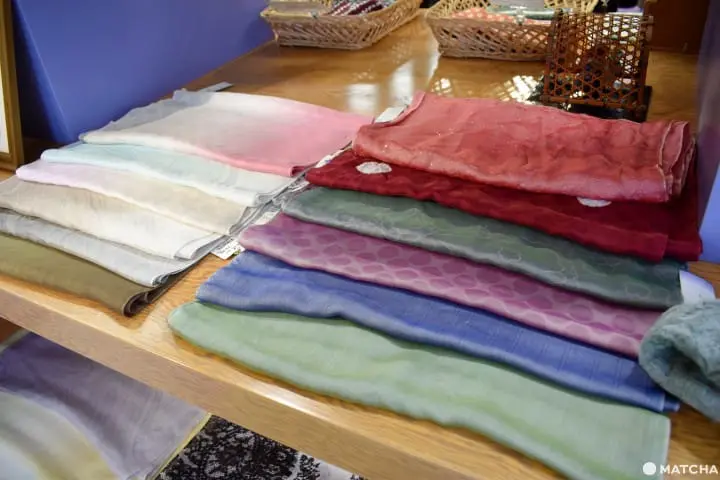
Silk crepe is brocade fabric that is used in clothing such as kimono. Tango silk crepe made in the Tango area, located in northern Kyoto, is characterized by its full, soft-to-the-touch texture and extremely high quality.
The fabric is very popular as it was used by the Empress as a kimono sash and by world-famous brands in their products.
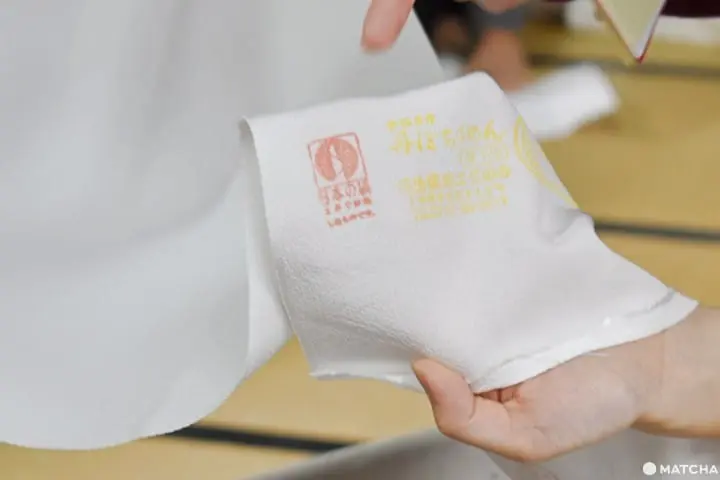
A feature of silk crepe is the slight unevenness of the cloth’s surface.
By having this unevenness, it makes it difficult for wrinkles to form and also gives the fabric a soft appearance. Pictured above is a white silk crepe, but a rich, deep color can be achieved by dyeing the fabric.

Warp and weft threads being woven together by machine. In cooperation with: Tayuh Textiles Co., Ltd.
The reason behind the uneven fabric comes from its manufacturing process.
Wefts with added torsion (twisted threads) and straight warp threads are alternately weaved together. The finished fabric is then washed to shrink the threads. This creates a unique, uneven surface.

The Tayuh Textiles Shop
Kimonos may be very high-end items, but you will also find reasonably-priced accessories made with Tango silk crepe in stores.
If you wish to see where and how Tango silk crepe is manufactured, you can participate in a free tour by applying on Tayuh Textiles’ website (Japanese). The guided tour will be in Japanese, but you’ll be able to watch silk crepe being made up-close and see the impressive loom weaving machines through this tour.
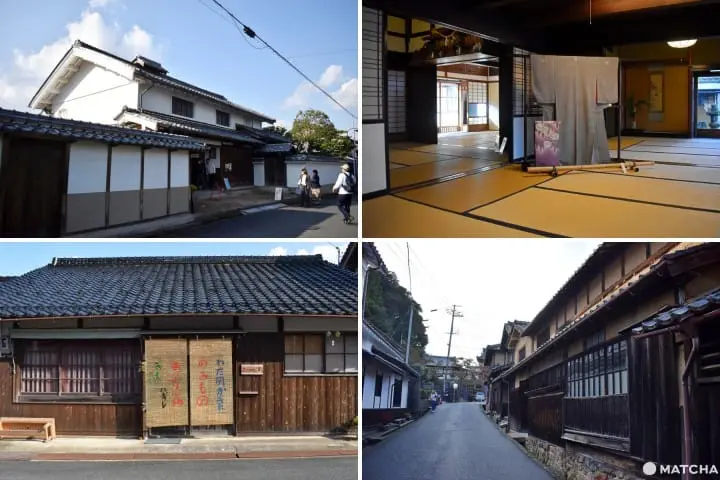
The town of Yosano is one of the main manufacturers of Tango silk crepe. On Yosano’s Silk Crepe Road, you’ll find a collection of historical buildings reminiscent of when the town flourished due to Tango silk crepe from during Edo and Showa periods.
One of these buildings is the Bito Family Residence, which you can tour inside (pictured on the top left and right). The amount of Tango silk crepe manufacturers havs decreased over time, but you can still hear the sounds of the loom machines even till this day by walking down Silk Crepe Road.
Tayuh Textiles
Address: Kyoto, Kyotango, Amino, Asamogawa 112 Google Map
Access: Take a taxi for 5 minutes from Amino Station on the Kyoto Tango Railway
Official Website: http://www.tayuh.jp/ (Japanese)
Tour Application Form (Japanese): http://www.tayuh.jp/inspection/form.html
Silk Crepe Road Former Bito Family Residence
Address: Kyoto, Yosa, Yosano, Kaya 1085 Google Map
Access: Take the Tankai Bus from Yosano Station (Kyoto Tango Railway), exit at Silk Crepe Road (about 20 minutes, 200 yen), then walk for 5 minutes
Official Website: Silk Crepe Road http://www.uminokyoto.jp/course/detail.php?cid=27 (Japanese)
Venture to Kyoto by the Sea

Kyoto by the Sea is where you can explore a lesser-known region with beautiful scenery and old traditions while enjoying Kyoto.
Have fun encountering this unique side of Japan's cultural capital!
In cooperation with Poka Poka Farm, Kurotani Washi Craft Village, Tayuh Textiles, Former Bito Family Residence, Kyoto by the Sea DMO, ENGAWA Co., Ltd.
MATCHA Editer.









































![[Coupon Available] Attention Overseas Winter Sports Fans! Nagano's Sports Depot Has Evolved](https://resources.matcha-jp.com/resize/720x2000/2026/01/05-254819.webp)
![[2 hours from Tokyo ] 10 Quiet and Breathtaking Views of Mount Fuji in Yamanashi Hokuto City , Yamanashi - Part 2](https://resources.matcha-jp.com/resize/720x2000/2025/12/16-253037.webp)

![[Reopening in March 2026] Ikoma Sanjo Amusement Park Park, 45 minutes from Osaka , with free admission](https://resources.matcha-jp.com/resize/720x2000/2024/08/28-194409.webp)